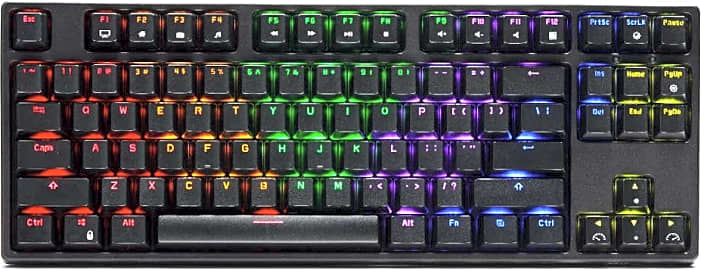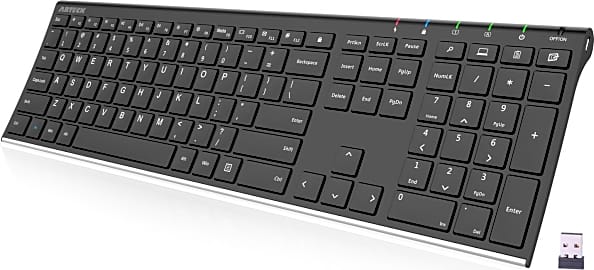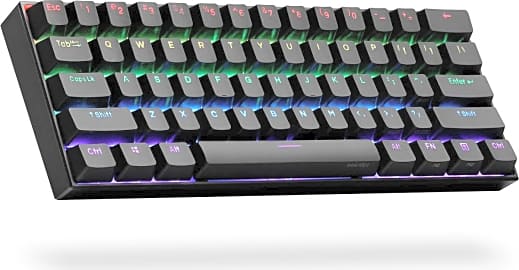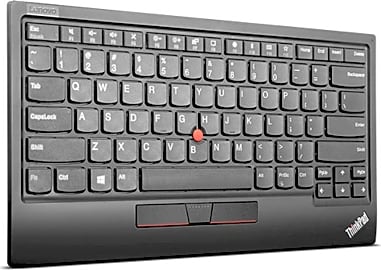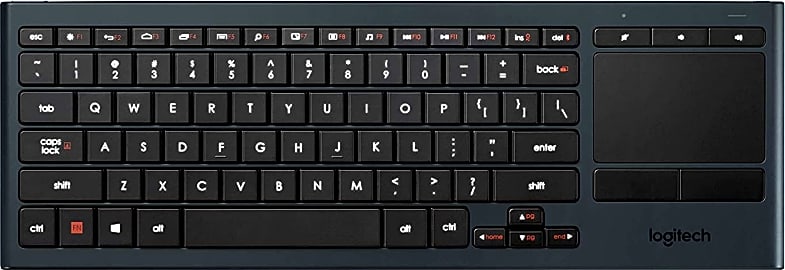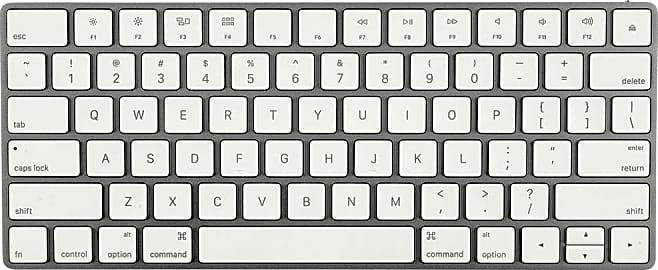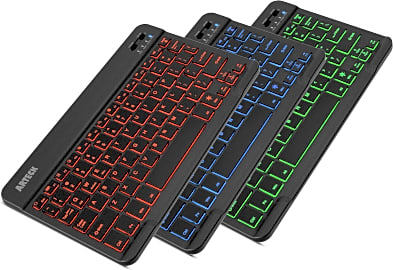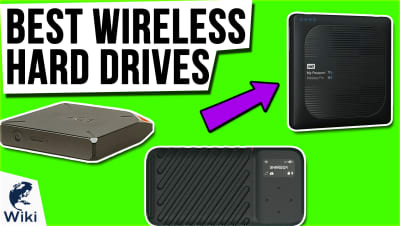The 10 Best Wireless Keyboards

This wiki has been updated 40 times since it was first published in March of 2015. Modern wireless keyboards come in a number of styles. Some desktop users may want to stick with traditional 2.4-gigahertz connections, because they typically come with a USB dongle, while owners of newer laptops and phones will appreciate the convenience of pairing with multiple devices via Bluetooth. We have included both types in our list, ranked by battery life, style, longevity, and comfort. When users buy our independently chosen editorial recommendations, we may earn commissions to help fund the Wiki.
Editor's Notes
December 18, 2020:
People can get surprisingly attached to their keyboards, but in a way it makes sense, because it's basically the most important input device on a PC. The Obinslab Anne Pro 2 and Royal Kludge Sink87G will satisfy some of the most demanding users, the Arteck Universal Slim and Logitech K830 are great for home theater PCs, the Lenovo ThinkPad TrackPoint II and X9 Performance Minimalistic add functionality to offices no matter how small, and the Logitech K860 delivers a premium fit and finish as well as actual ergonomic-friendly negative tilt.
You'll notice we don't have many gaming-centric models here, as most of those are usually wired. There are, though, some good wireless gaming keyboards out there, if you want to play without being tethered down.
March 28, 2019:
If you work or play a lot on any computer, the keyboard is likely the part you'll touch the most, so you want to be certain it's of good quality. When it comes to HIDs (human input devices), Logitech often seems to have the market cornered, but that's not totally the case here. Yes, you will find a few from them on our list, but but they're focused less on full-size and intensive use cases, and more centered around mobile use and versatility. If you can get it to work properly -- which I have done before in the past, though it did, admittedly, take some work -- their Flow software is not only neat, but also pretty darn useful, particularly if your workload or entertainment slate is spread out concurrently over multiple PCs. And their K830, while not engineered for cross-device use, does have a relatively high-quality touchpad, and is a suitably high-end device that's not only ideal for controlling your media server from the couch, but also looks great when it's sitting on the shelf. Arteck's Universal is nearly as versatile, as well; it's inexpensive, slim, built in quite a small form factor, and pairs readily with any operating system. It makes a good budget multimedia controller as well the only thing we didn't like about it is that it takes a couple keystrokes to wake up after going to sleep, which happens fairly quickly.
If you're doing more typical desktop or laptop work and want something a little more traditional, it's tough to beat the Arteck HW192. It's lightweight, sturdy, incredibly attractive, and comes at a rock-bottom bargain price. There's very little not to love, aside from the lack of a backlight. The HP Spectre is a similarly fancy device, although it's considerably more expensive. But if you or your loved one is a keyboard enthusiast (an eccentric and lovable bunch, them), they may have heard of Royal Kludge before. This relatively upstart manufacturer makes a handful of exceptional boards, and if you foresee ever wanting to replace the keycaps with a custom set, this is the one for you. If you're a gamer, it's hard to go wrong with the RK as well. It has perfect feedback levels with minimal clickiness, and its backlight will keep you playing well into the night. Mac users who do a lot of quick typing may like the Apple Magic; it's nearly totally silent, and has extremely short travel distance, which can help prevent fatigue. But if you really want your keyboard to look the best, and maybe even be the centerpiece of a well-design PC, get the Azio. Just look at it. It's gorgeous.
How Does a Wireless Keyboard Work?
Think of a wireless keyboard operating in the same manner as a remote control.
Most wireless keyboards work by either radio frequency, infrared, or short-wave UHF signals. That sounds complex, right? So, let's simplify it. Think of a wireless keyboard operating in the same manner as a remote control. You punch in a code, and the device responds to your command.
Wireless keyboards that use infrared technology (you can generally tell these by the red light) are dependent upon light waves to carry their signals, which is why a strong florescent lamp may have the potential to disrupt any signal.
In a similar fashion, any keyboard that works by using radio frequency can be thrown off if there's an AM/FM transistor operating within the receiver's range. Follow the same logic for any wireless keyboard using short-wave UHF (i.e., the keyboard's signal can be disrupted by any television set).
In all three cases, the wireless keyboard operates by sending a signal to the accompanying receiver every time you strike a key. That receiver transmits a signal into the computer via a USB port, prompting the appropriate text to appear on your screen.
What Do I Need to Know About a Wireless Keyboard Before I Buy?
The most important thing to know is the exact purpose for which you plan on using the wireless keyboard. Some people prefer the freedom of a console that isn't tethered to a cord. Others have an office set-up that's completely overrun with wires, and they want to clean it up. And then there are those who consistently use their keyboards to facilitate PowerPoint presentations or weekly business meetings.
The good news is, whatever your needs are, there is a wireless keyboard that has been designed for you.
The good news is, whatever your needs are, there is a wireless keyboard that has been designed for you. If you want something ergonomic, for example, your best bet might feature a cushioned body that sits comfortably in your lap. If your interest lies in using the keyboard as a remote, you may want to look into something handheld that comes equipped with a keypad, but is generally intended to point-and-click, or type in minor strings of text.
Once you've narrowed the list, here are some other basic areas you may still need to consider: What type of features does each keyboard offer? What type of estimated battery life does each keyboard have? Is there a wireless mouse included? Is the keyboard compatible with your operating system? Is it resistant to damage or spills? And, finally, does it come with any manufacturer guarantees?
A Brief History of the Wireless Keyboard
A keyboard, by definition, refers to a panel of keys arranged for a similar purpose. Early keyboards in both music and typography have been in existence since the 1700s. Typeset keyboards evolved over the centuries, with the first popular incarnation of the "modern keyboard" being patented in conjunction with the Sholes and Glidden Type-Writer in 1868.
A keyboard, by definition, refers to a panel of keys arranged for a similar purpose.
Keyboard arrangements became standard during the early 1900s, thereby establishing the QWERTY layout (originally designed in 1874) as an agreed-upon norm. Shift keys, function keys, and different character options were soon to follow.
During the 1960s, a majority of companies began to replace their manual typewriters with electric models from IBM and Remington (among others). A lot of electric models used what was known as a typeball, which eliminated the constant jams a typewriter would experience when two or more letter bars became entwined.
After the 1970s, the modern keyboard went from electric, to electronic, to completely automated with the introduction of the personal computer - a revolution in technology. Computer keyboards became more versatile, allowing users to move or change or highlight blocks of text with the touch of a button. The introduction of the mouse made navigating throughout a document even easier.
The technology for wireless keyboards has been around for decades, yet the demand for such a device didn't really catch on until the 1990s. The rising popularity of PowerPoint, the internet, and home computing created an atmosphere in which the wireless keyboard (and mouse) eventually came into their own.


